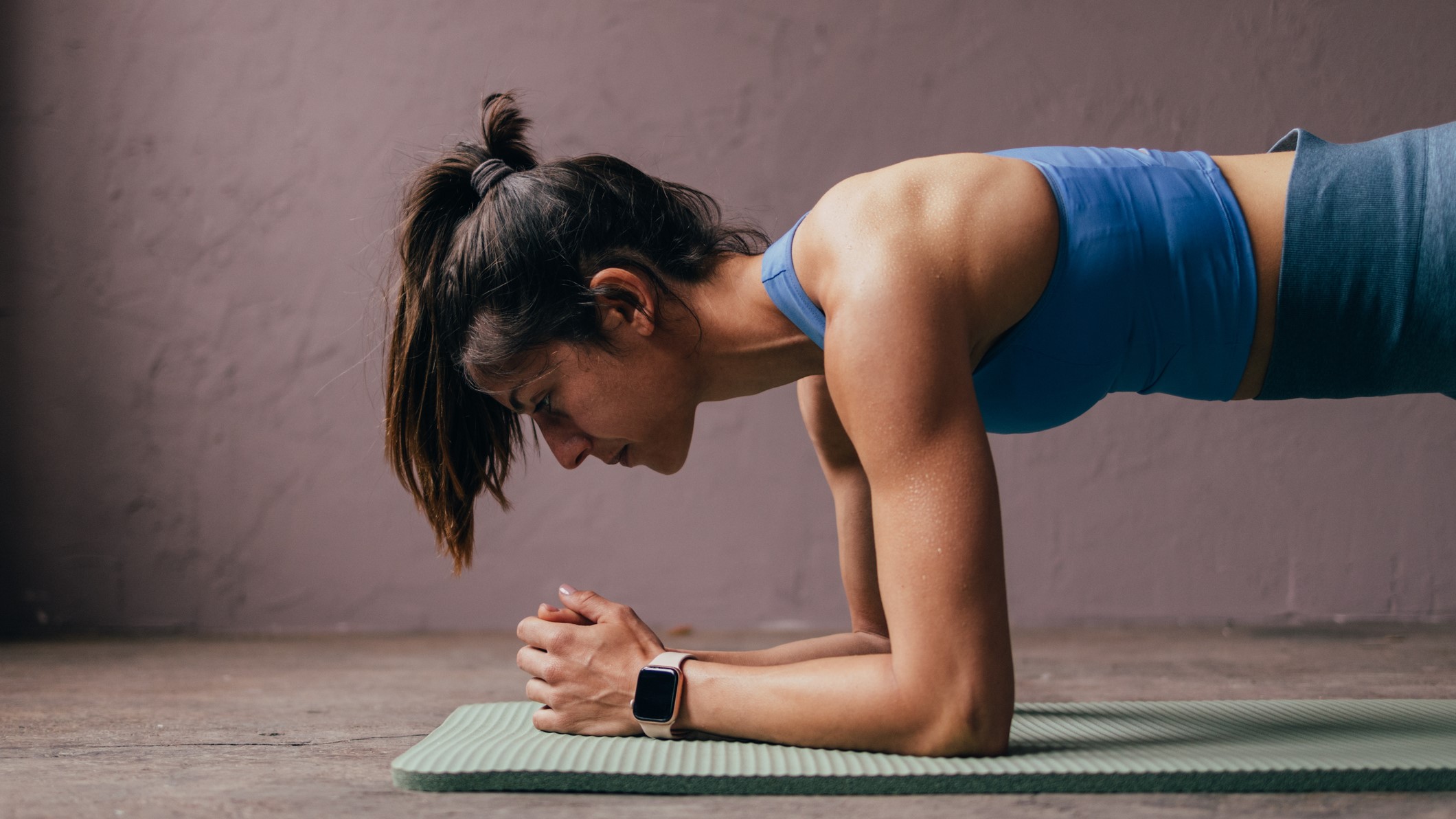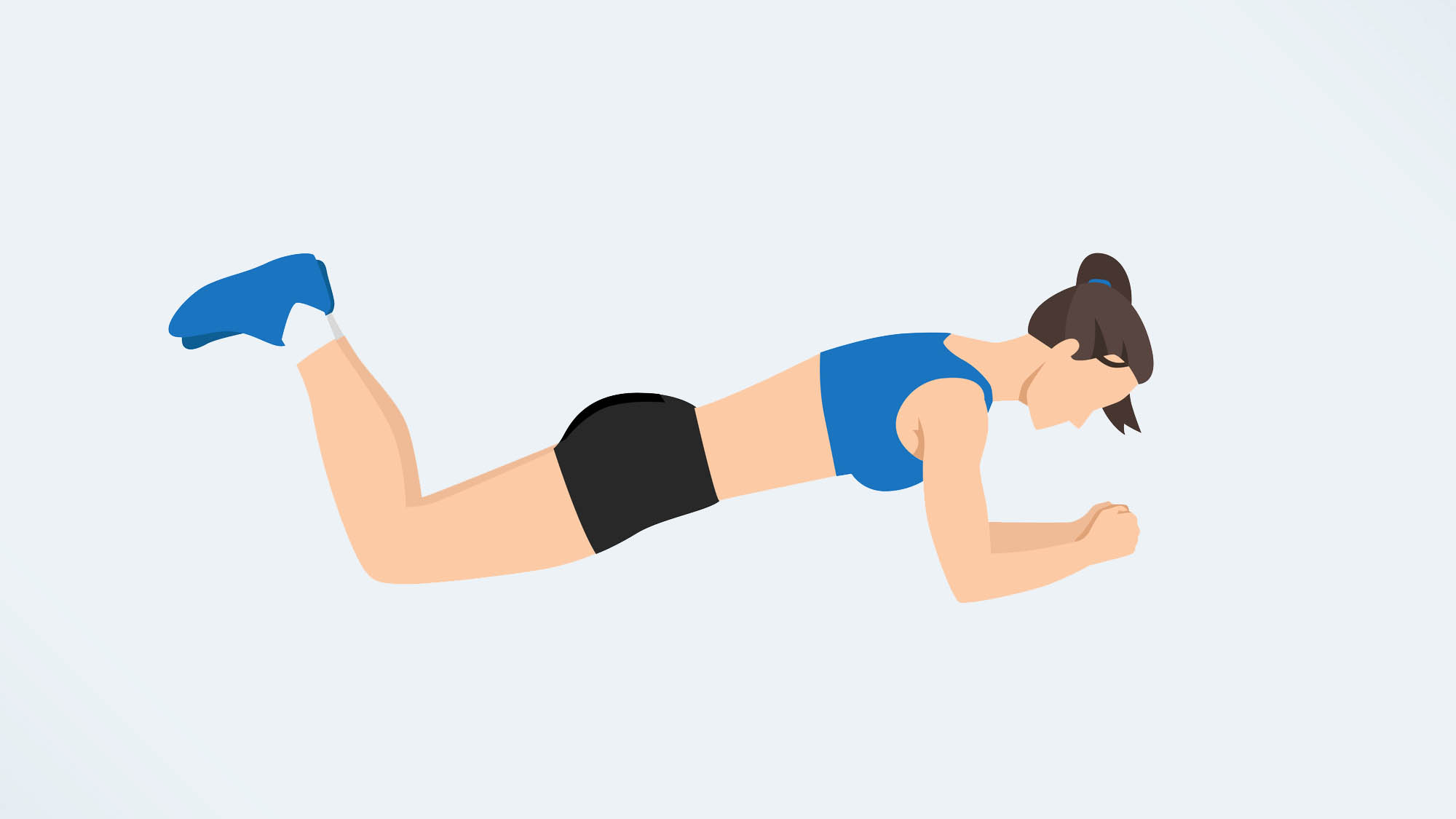I did knee planks every day for a week — here's what happened
This modification is ideal for anyone looking to build core strength

If you’re new to the plank exercise or exercise in general, or it’s been a while since you last held a forearm plank, it’s worth starting with knee planks to help you build up your core strength.
A modified version of the plank, knee planks are anything but the easy way out — they’ll still target your deep core muscles (transverse abdominis), six-pack muscles (rectus abdominis), and your internal and external oblique muscles.
Dropping your knees to the ground during knee planks allows beginners, or those new to the move, to really focus on their form. Having your knees on one of the best yoga mats relieves some of the pressure on your lower back, so it’s a good alternative if you’re returning to exercise following an injury (although always check with your doctor first).
To find out more, I added knee planks to my workout routine for a week to really go back to basics, and take a look at this beginner-friendly move. As a reminder, what works for me might not be right for you and your body — you shouldn’t work your abs every single day, as your body needs time to rest and recover. When I’m not doing weird workout challenges for work, I typically train abs twice a week.
How to do a knee plank
Let’s start by taking a look at how to do knee planks with the correct form:
- Start on an exercise mat, lying on your stomach, with your elbows on the floor and your forearms extended out in front of you. Make sure your elbows are directly under your shoulders.
- Press your forearms into the mat, and raise your torso up off the mat. Your knees, toes, and elbows should still be touching the floor.
- Keep squeezing your core — think about sucking your belly button into your spine.
- Make sure your eye gaze is netural — don’t look up and out in front of you, or back at your knees, as this can put pressure on your neck.
- Squeeze your glutes to keep your hips still.
- Hold this for 15-30 seconds, then relax. Build up slowly to extend this for as long as you can, while still holding proper form.

If you’re looking to progress this, try a straight arm plank with your knees lowered to the floor — this will help you build wrist strength to hold a full plank.
I did knee planks every day for a week — here’s what happened
To find out more about this plank variation, I added it to my workout routine every day for a week. I decided to start with one minute a day, and try and build up as the week went on — hey if Jennifer Aniston can hold a 10-minute plank, why can’t I, right? (Here’s what happened when I tried working out like Jennifer Aniston). Here’s what I learned:
Get instant access to breaking news, the hottest reviews, great deals and helpful tips.
It was harder than expected
Tom’s Guide readers will know, here at the fitness desk, we love a workout challenge. This isn’t my first week-long attempt at a plank variation — I’ve tried bear planks, walking planks, and plank jacks before. That said, I was expecting this one to be a lot easier than it was — even with my knees on the ground, my core was still on fire after my first minute on day one.
Complete beginners should only hold the plank for as long as they can without compromising their form — you don’t want your hips to drop toward the ground or rise toward the ceiling, creating an arch in your lower back.
It helped me improve my form
By the end of the week, I managed to hold a knee plank for five minutes — a huge improvement for me. Far from being an easy shortcut, doing knee planks for a week really forced me to work on my form when holding a plank. It made me think about keeping my hips level, not tucking my pelvis under to try and make the move easier. It also forced me to really engage my entire core, and keep it squeezed tight throughout.
One of the huge benefits of planks, whatever variation you opt for, is that they help you build functional movement patterns with just your body weight. This means they’ll strengthen the parts of your body that you use to do everyday tasks like walking, lifting objects, and climbing the stairs.
Far from being just an aesthetic goal, as a runner, a strong core is important when it comes to running with good form, and avoiding injury. This exercise definitely worked my abs hard for a week.
It made push-ups easier
For the final few days of the challenge, I did straight-arm knee planks. I’ll often opt for forearm planks over full planks, as I find the latter is pretty tough on my wrists. Doing this modification allowed me to focus on pushing down into the mat, with my palms flat on the floor and my wrists underneath my shoulders.
After a week of really dialing into my plank form, I found my push-ups felt a little easier — probably because I’d been switching on my shoulder and chest muscles, needed for the move.
Not just for beginners, I’ll definitely be working knee planks into my warm-ups to help me dial into my form before my next ab workout.
More from Tom's Guide
- I did 12-minute reverse planks every day for a week — here's my results
- 5 best kettlebell exercises for beginners to build muscle, strength, and power
- Beginners running plan: build up to run for 30 minutes in 6 weeks

Jane McGuire is Tom's Guide's Fitness editor, which means she looks after everything fitness related - from running gear to yoga mats. An avid runner, Jane has tested and reviewed fitness products for the past five years, so knows what to look for when finding a good running watch or a pair of shorts with pockets big enough for your smartphone. When she's not pounding the pavements, you'll find Jane striding round the Surrey Hills, taking far too many photos of her puppy.
